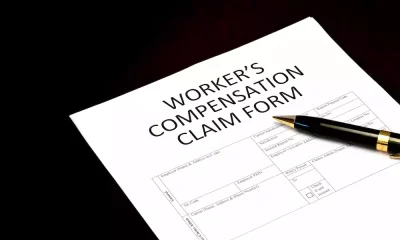Legal
Workplace Injuries: What Employers Need To Know

Non-fatal workplace injuries dropped in 2020 due to the pandemic. However, while fewer workplace injuries are welcoming news, employers can not relax. Instead, they need to be vigilant and know what they can do to prevent injuries in their workplace. Should a business experience too many workplace injuries, word will get out, and management will need to go into brand damage control to prevent customers from choosing to shop elsewhere.
Too many workplace injuries, especially if they are major incidents like broken bones, lifetime disability, or even death, can do the unthinkable to your business, including:
- Tarnish your brand and business reputation
- Distract your staff so productivity takes a hit
- Fewer sales if customers choose your competitors
- Finances stretched
Plus the pain doesn’t stop there. Your business may face costly lawsuits, worker’s compensation claims, or medical bills that can consume your time, and resources.
Unfortunately, accidents can happen anytime despite your company’s best efforts to keep everyone safe. In this article, we cover what your business can do to prevent workplace injuries.
While no two incidents are exactly the same, there will be commonalities in the actions taken that lead to a workplace accident. The starting point is the documentation – rules, and policies on health and safety in the workplace.
Safety Rules and Expectations
Small businesses don’t need to worry about where they are going to find the time and resources to create rules and best practices for all roles in their company. The Occupational Safety and Health Administration (OSHA) has a series of standards your business must follow. Use them as part of your business code of conduct and health and safety program. This is the worst part over, now for the next step which is staff training.
Workplace safety training
Your business will need to implement health and safety training for all staff. In your onboarding program set aside time for workplace safety training. This is for new hires. Your existing employees will also need to go through the training so you could set aside time for is a crucial part of the guidelines.
Employees should know and understand the workplace safety rules and expectations even if they are not around machinery but working in an office. Plus any worker who comes into contact with hazardous materials needs to know what they need to wear and how to handle the substances.
A workplace safety policy establishes procedures and training requirements. Everyone in the company must be informed and trained so they appreciate it is also their responsibility to keep themselves and other people safe at work. Getting your staff and maybe external visitors to sign a form agreeing to comply with safety procedures is also necessary.
Employer Liability and Workplace Negligence
Even if you have no intention to bring harm, you can be held liable for injuries your workers may sustain in your place of business. Employees usually agree not to sue when they receive workers’ compensation benefits.
Ensure your workers’ compensation policy is adequate with your industry’s needs since most claims are handled through settlements with workers’ compensation carriers. It will help you cover the financial burdens that may come with any workplace injury. However, it doesn’t mean you’re free from facing lawsuits.
Injured employees may file a legal action against you to recover greater compensation for their medical bills, lost wages, and pain and suffering. And, if proven that improper workplace safety practices or unsafe premises played a role in their injuries or illness, your business can face costly litigation.
Workplace Accident Response Plan

Your business may face different forms of legal action when an employee gets injured on the job or in the office. Having first aid kits and emergency contacts on hand and investing in employees’ first aid training are some things you can do to prepare for a possible injury at work.
But how you respond to the accident can help minimize the severity of an injury and reduce your exposure to additional legal troubles. An employer must know what to do when safety measures fail and workplace accidents occur. Ensure to have a detailed response plan readily accessible to all employees.
First Responder
Below are a few steps to help you respond to a potential accident and injury in your place of business.
Use your first aid training to follow the DRSABCD process.
- D – check for danger and if possible remove before approaching the injured person
- R – check for a response – is the person conscious?
- S – seek help from emergency services if the accident is major
- A – clear the patient’s airways and clear them so they can breathe
- B – check breathing
- C – if the heart has stopped use CPR
- D – use a defibrillator if there is one nearby
Provide immediate medical care to the injured worker through any of your company’s medical professionals. But call emergency medical services for any serious injury or transport the work to a local doctor.
Document incident
Document any relevant information about the incident with photos, videos, and statements from those who witnessed the accident. Assess what caused the injury and ensure it doesn’t happen again. Get the details as accurately as possible.
In case of litigation, the reports might be used in court. Assess what caused the injury and ensure it doesn’t happen again. This will require actions taken to prevent a similar incident.
Reporting
Employers are responsible for informing the OSHA when serious injuries take place. Business owners can be sanctioned with fines if they fail to do so within the appropriate period.
Regarding the response plan, it’s always best to have a written procedure for employees and supervisors.
Seek Legal Counsel for Workplace Injuries
Despite all your preparation and documentation of the injury, there’s a possibility that the injured employee can sue you.
Plus if the worst happens and your business may fail because of the incident, rebrand as soon as you can and do everything you need to to prevent workplace injuries on your watch.









